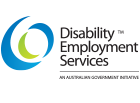
Inclusive workplaces thrive as a result of diversity; supporting employees living with disability, injury or health condition is an essential aspect of enabling an inclusive environment. While a person’s disability doesn’t change their ability to do the right job, it is important to recognise how physical adjustments, language, education, and leadership play an important role in supporting all employees to thrive.
What does disability look like?
One-in-six people are living with disability in Australia, with 90 per cent of the 4.4 million people living with an invisible disability. Given the prevalence of invisible disabilities, it is important to debunk myths and broaden societal views about people living with disability, injury or health condition and their different experiences.
Disability can range from a person living with chronic pain, an acquired brain injury, mental health conditions or a physical disability. Not only is disability very broad, but the impact the health condition has on each person is very different.
It is crucial for employers to understand this and prioritise open communication with employees. By fostering an environment where employees feel comfortable discussing their unique needs, organisations can ensure they provide the necessary support and accommodations to promote inclusivity and empower every individual to thrive.
Obligations to managing disabilities in the workplace
The fear of discrimination is potentially forcing those with invisible disability to hide their condition from prospective employers. This can prevent businesses from supporting these employees and ensuring they are a productive part of their teams.
Disability discrimination accounts for the highest volume of complaints to the Australian Human Rights Commission annually, according to 2021 data. There are no legal obligations to disclose a disability, however, to make potential employers aware of any adjustments needed, it is crucial for those with invisible conditions to discuss their needs upfront.
If an employer is made aware of a staff member’s invisible disability, injury or health condition from the start, it enables the business to effectively manage the person and their subsequent team.
Similarly, for people with physical disabilities, being transparent and engaging in an open dialogue with employers and colleagues will allow for a more collaborative way of working and the creation of a workplace that is accessible to all. It also provides an open discussion about how the person living with disability, injury or health condition prefers to work, and whether there are any practices that have been successful for them in the past.
How managers support employees with disability, injury or health condition
Supporting employees living with disability is not only a legal and moral responsibility but also a vital component of creating an inclusive and diverse workplace. By understanding and addressing the unique needs and challenges faced by employees living with disability, organisations can foster an environment that promotes equal opportunities, empowers individuals, and enhances overall productivity.
Below we outline key strategies and considerations that employers can implement to support their employees living with disability, injury or health condition, enabling them to thrive both personally and professionally.
Inclusive work culture
Creating an inclusive work culture goes beyond providing accommodations; it requires proactive measures to educate and raise awareness among colleagues. Conducting training sessions and workshops on disability inclusion can help foster empathy, understanding, and promote a more inclusive mindset within the organisation.
All people have many contributions to make to workplaces and the wider community, but their capacity to do so can be limited by the perceptions or actions of others.
atWork Australia is pleased to run a free Diversity Webinar Series to enhance awareness and knowledge of disability and inclusion in the workplace. The webinars aim to empower employers to build more diverse teams and confidently support employees living with disability, injury, health condition or disadvantage. The seminar provides workplaces with practical tools and strategies to gain a deeper understanding of how to attract, recruit and support a diverse workforce.
By implementing these initiatives, employers can establish an environment that values diversity, promotes equal opportunities, and encourages the full participation and contribution of all employees.
Provide reasonable adjustments
Like all employees, people living with disability, injury or health condition bring a range of skills, abilities and qualifications to the workplace, and work in a wide range of jobs.
When you employ a person living with disability, injury, health condition or disadvantage, they often do not need any specific workplace changes to be effective in their role. But for those that do, some form of modification or adjustment will help support their independence at work, building a more equitable and inclusive workplace.
It is important to ensure employers are aware of the Government support and programs available to help them. Taking advantage of resources like the Employee Assistance Fund through JobAccess can facilitate making reasonable workplace adjustments that are free and tailored to meet the specific needs of employees living with disability, injury or health condition.
Furthermore, workplace adjustments, including assistive technology, often not only benefit the person living with disability, injury, or health condition, but all members of the team. Adjustments include, but are not limited to:
- Workplace infrastructure, such as ramps, rails, light dimmers and sit-to-stand desks;
- Computer hardware;
- Computer software;
- User experience; and
- Work arrangements.
Flexible work arrangements
Flexible work arrangements tailored to individual employees’ needs play a crucial role in managing employees living with disability, injury or health condition.
Recognising that everyone’s circumstances and abilities are unique, offering flexibility in work hours, location, or job tasks can significantly enhance productivity, job satisfaction, and overall wellbeing. Whether it’s remote work options, adjustable schedules, or job sharing, these arrangements empower employees to better manage their disability while fulfilling their professional responsibilities. By embracing and implementing flexible work arrangements, employers not only demonstrate their commitment to inclusivity but also unlock the potential of employees living with disability, injury or health condition to thrive in the workplace.
Communicate and collaborate
Effective communication and collaboration are essential in ensuring that all employees are on board with supporting individuals living with disability, injury, or health condition in the workplace. Clear and open communication channels should be established, allowing for the exchange of ideas, concerns, and experiences related to disability inclusion. This creates a safe space where employees can share their perspectives, ask questions, and seek guidance. Collaborative efforts, such as forming employee resource groups, can bring together individuals from various departments to work collectively towards fostering a supportive and inclusive environment.
Provide support and mentoring
Providing support and mentorship to individuals living with disability, injury, or health condition within the workplace is a powerful way to ensure their success and wellbeing. For example, establishing buddy programs where employees living with disability, injury or health condition are paired with supportive colleagues to provide guidance, share experiences, and offer practical assistance. Additionally, offering counselling services or access to external resources, can provide individuals with the necessary tools and support to navigate challenges effectively.
Equal career advancement opportunities
Ensuring equal career advancement opportunities and recognising the achievements of employees who live with disability, injury or health condition is vital for creating an inclusive workplace.
It requires organisations to evaluate their promotion and advancement processes, ensuring they are accessible, unbiased, and based on merit. By fostering a culture of equality and meritocracy, organisations can break down barriers and create a level playing field, allowing individuals living with barriers to excel, progress, and reach their full potential within the workplace.
Summary
Supporting employees who live with disability, injury or health condition is an essential aspect of promoting an inclusive and diverse workplace. It involves creating a supportive work culture through communication, training, support, collaboration, and workplace adjustments. Additionally, flexible work arrangements based on individual needs can enhance productivity and wellbeing for all employees.
By embracing these strategies, organisations can create an environment that values diversity, promotes inclusivity, and maximises the potential of every employee. Likewise, employment agencies that offer disability-focused job coaching services can in turn help employees take the first step and succeed in their placement.


